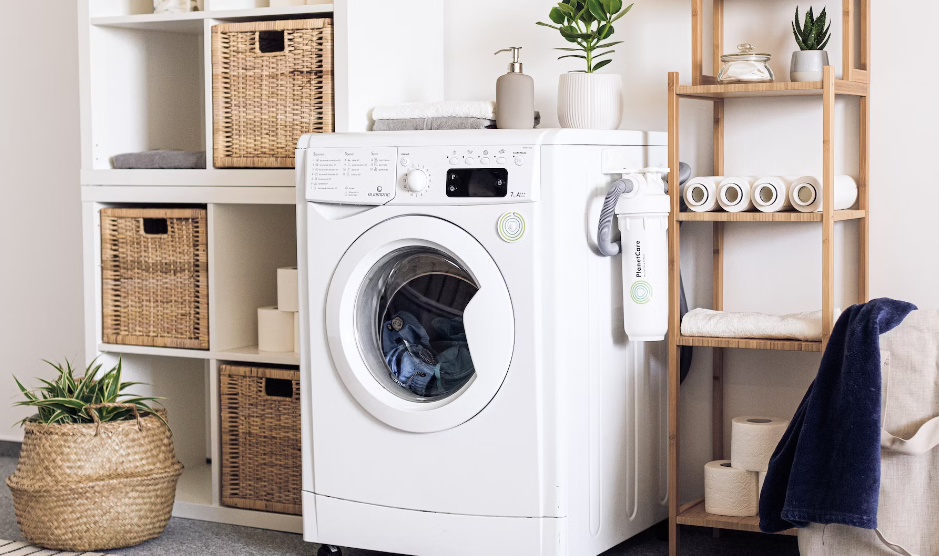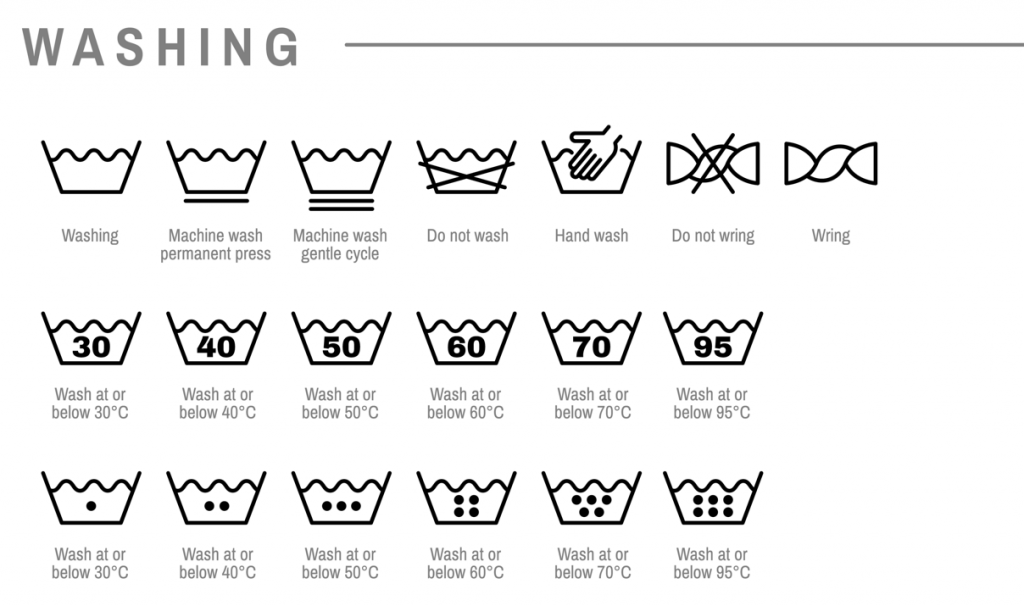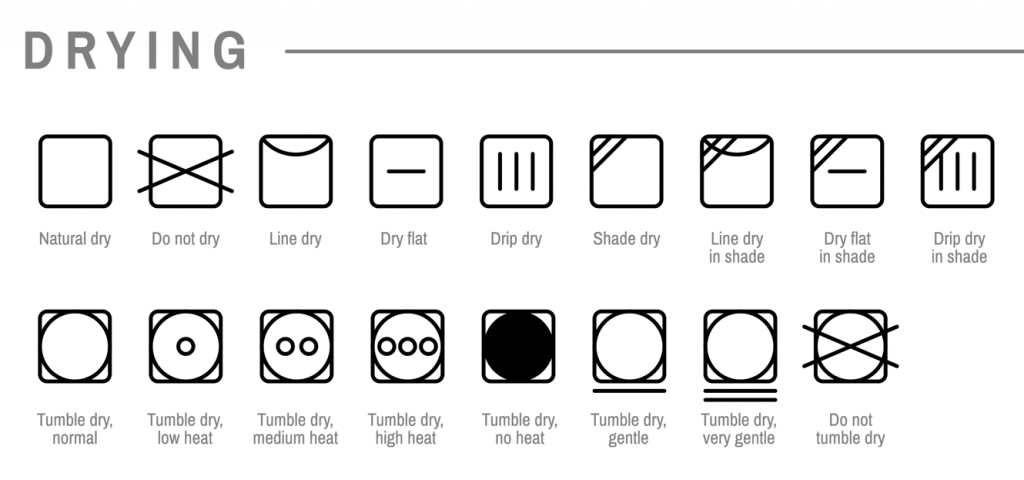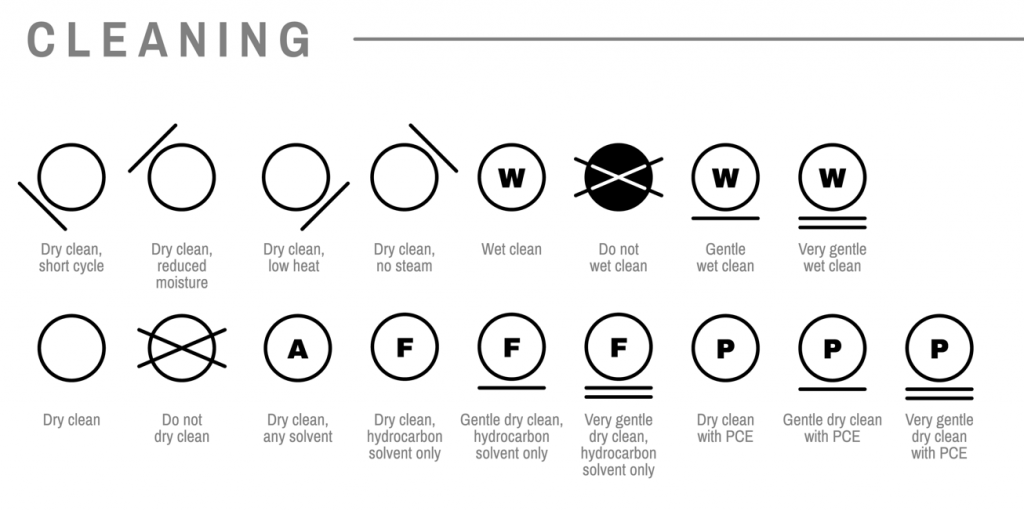Washing Machine Guide 101: Laundry Symbols Meaning

© PlanetCare / Unsplash
Laundry symbols can definitely look like a foreign language if you have never come across a washing machine beforehand. From baskets to arrows, to even X’s and O’s, washing machines definitely do not make it easy for you to read them. This makes it tricky to wash that load of clothing that has been eagerly waiting to enter the machine. However, we are here to help! Have a look at our detailed guide on laundry symbols and their meanings to find out more.
Laundry Symbols Meaning
Washing machine symbols can be divided into the following categories:
- Temperature Symbols
- Washing Symbols
- Drying
- Cycles
- Bleaching
- Ironing
Temperature Laundry Symbols Meaning
In certain instances, the diagram may display the washing temperature, while in other cases, you can determine the machine wash temperature by examining the number of dots present:
- If there is a single dot, it signifies that the item should be washed in cold water at 85ºF (30ºC).
- Two dots on the symbol indicate that a warm wash at 105ºF (40ºC) is suitable.
- When you see three dots, it signifies that a warm to hot wash at 120ºF (50ºC) is recommended.
- Four dots on the symbol indicate that a hot wash at 140ºF (60ºC) is the appropriate temperature.
- If you see five dots, this signifies that a sanitizing wash at 160ºF (70ºC) is required for the item.
Washing Laundry Symbols Meaning
To avoid potential problems, it’s crucial to always refer to the label for care instructions. Neglecting to follow care labels can pose significant risks to your garments, as well as potentially affect others in the same laundry load. Common consequences include distortion, shrinkage, and color fading.
In particular, color fading can lead to bleeding onto other items in the load. For instance, you might encounter a scenario where a red sock in the same wash as a classic white load causes everything to turn pink.
Here are some key laundry care symbols and their meanings:
- A tub icon with a wavy line indicates that the item can be machine-washed.
- When you see a tub icon with a hand, it means the item should be hand-washed.
- If there’s a tub icon with a cross through it, it’s a clear indication that the item should not be washed.
- A circle symbolizes that the item should be dry-cleaned only.
- A circle with a cross through it communicates that the item should not be dry-cleaned.

Drying Laundry Symbols Meaning
The tumble dry symbol provides essential information about the heat settings to be used during the drying process:
- When you see a tumble dry symbol with a filled-in circle, it signifies that no heat should be applied during drying.
- If the tumble dry symbol contains a single dot at its center, it serves as an indication to use a low heat setting, as outlined in the tumble dryer temperature guide.
- Two dots within the symbol suggest that a medium heat setting is appropriate for the item.
- In the case of three dots appearing within the symbol, it implies that a high-temperature setting can be safely employed for drying.

This information not only helps prevent damage to your clothing but also ensures that your garments maintain their quality and longevity when subjected to the appropriate drying conditions.
Laundry Machine Cycles
Understanding those little symbols on your laundry labels can be a real laundry lifesaver:
- If you spot just the tub with a wavy line, it’s like a green light for a regular washing cycle.
- When there’s a tub with a horizontal line below, think of it as a nudge to go for the permanent press cycle.
- And when you see two horizontal lines below the wavy tub icon, it’s like a gentle whisper saying, “Hey, use the delicate or gentle cycle.”

These symbols are like secret codes that help you pick the right washing cycle and keep your clothes in top shape without all the fuss.
Bleaching Laundry Symbols Meaning
Before you even think about adding bleach to your laundry, it’s a smart move to decipher those bleach-related laundry symbols:
- If you spot a simple triangle, it’s your green light to use bleach.
- When that triangle has two slanted lines inside, it’s like a hint to go for non-chlorine bleach instead.
- But if you see a big “X” over the triangle, that’s your laundry’s way of saying, “Nope, don’t even think about bleaching me!”

Understanding these bleach symbols on your clothing tags ensures you’re on the right track when it comes to maintaining your clothes’ colors and fabrics. It’s all about keeping your laundry game strong and your favorite pieces looking their best.
Ironing Laundry Symbols Meaning
- When you see an iron icon, it’s a signal that the item can be ironed.
- If there’s a single dot inside the iron icon, it’s like a reminder to stick to low heat.
- Two dots? That’s your cue for medium heat.
- Three dots inside the iron icon give you the green light for high heat.
- Now, if the iron icon has two slanted vertical lines beneath it with a “no entry” sign (crossed through), it’s telling you to avoid using steam during ironing.
- But if you spot an iron icon with a big “X” over it, consider it a clear message: “Do not even think about ironing this!”

These symbols help you make sure your ironing game is on point, ensuring your clothes look crisp and wrinkle-free without any mishaps.
FAQs Around Washing Machines
Here are some answers to the most frequently asked questions about washing machines:
1. How Can I Wash My Sneakers in the Washing Machine?
Although it might sound tricky, washing sneakers in the washing machine can be a convenient way to clean them. Here’s how to do it:
- Preparation: Remove the laces and any loose dirt or debris from your sneakers.
- Protection: To prevent your sneakers from banging around in the washing machine, you can place them inside a pillowcase or a laundry bag. Alternatively, you can use specialized sneaker bags designed for this purpose.
- Detergent: Use a mild detergent, and avoid bleach or harsh chemicals, as they can damage the materials.
- Settings: Set your washing machine to a gentle cycle with cold or lukewarm water. High heat can warp or damage certain shoe materials.
- Add Towels: Adding a few towels to the load can help balance the load and protect your sneakers.
- Dry: After washing, let your sneakers air dry naturally. Avoid direct sunlight or high heat sources like radiators, as they can also damage the materials.
2. Should I Separate Whites and Colored Clothing?
It’s generally a good practice to separate white and colored clothing, especially when washing for the first few times. Washing whites and colored items together can result in color bleeding, where the dyes from the colored items transfer onto the white ones. However, modern laundry detergents and color-fast fabrics are designed to minimize this risk. If you’re confident in the colorfastness of your clothing, you can wash similar colors together. Still, it’s advisable to read clothing labels and use cold water to reduce the chances of color bleeding.
3. Is Cold Water or Warm Water Better for My Clothes?
The choice between cold water and warm water depends on factors like fabric type and the level of soiling. Here’s a general guideline:
- Cold Water: Use cold water (around 30-40°C or 86-104°F) for delicate fabrics, dark or brightly colored items, and clothes that might shrink or lose their shape in warm water.
- Warm Water: Use warm water (around 40-60°C or 104-140°F) for everyday clothing that is moderately soiled.
- Hot Water: Reserve hot water (above 60°C or 140°F) for heavily soiled items like towels, bedding, and underwear, as it can be more effective in removing stains and sanitizing.
Always check clothing care labels and the detergent instructions for specific temperature recommendations.
4. How Much Detergent Should I Use?
The amount of detergent you should use depends on factors like your machine’s capacity, the level of soiling, and water hardness. As a general guideline:
- For a regular-sized load in a standard washing machine, use the amount specified on the detergent packaging. This is usually a capful or a scoop.
- For heavily soiled or larger loads, you may need to use a bit more detergent but avoid overloading, as it can lead to residue buildup.
- For high-efficiency (HE) machines, use HE detergent and follow the manufacturer’s guidelines on detergent usage, as these machines typically require less detergent.
5. Do I Need a Fabric Softener?
Fabric softeners are not always necessary, and their use depends on personal preference. Fabric softeners can make clothes feel softer and reduce static electricity, but they may not be suitable for all fabrics. Here are some considerations:
- Use with Caution: Avoid using fabric softeners on towels, sportswear, or items made of moisture-wicking fabrics, as they can reduce their absorbency and effectiveness.
- Alternatives: If you prefer not to use fabric softeners, you can try alternatives like vinegar or dryer balls to reduce static and soften clothes.
- Follow Instructions: If you choose to use fabric softener, follow the recommended dosage on the product label to avoid overuse.
Did this guide help answer all of your laundry symbol’s meaning questions? Or do you need extra help? Feel free to ask a question in the comments below!


